Buyers Guide Porsche 944
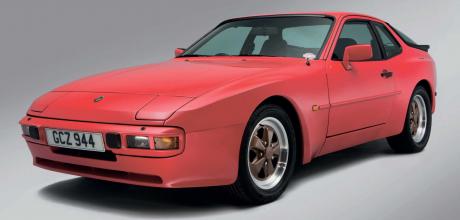
Shonky build quality was par for the course in the eighties, but it wasn’t something that Porsche 944 owners had to put up with. They also got to savour effortless performance, excellent practicality and a brilliant driving experience, and four decades after the 944 arrived in the UK, you can still enjoy all of these things. While the 924 did Porsche’s image no favours, the much more masculine 944 was just the ticket. With its flared wings and wheelarches covering wider alloy wheels, and a proper Porsche powerplant (the alloy 2479cc four-pot was effectively one bank of the 928’s V8), it was no surprise that the 944 quickly became the fastest-selling car produced by the marque. Now it’s a classic the 944 makes a huge amount of sense, but you need to buy carefully because some high parts costs can easily mar the ownership experience.
ULTIMATE GUIDE PORSCHE 944
Words: Richard Dredge
Pictures: John Colley
Key checks: bodywork
Thanks to a fully galvanised bodyshell, major corrosion is unusual, but you still need to check the rear panel where the latches and number plate are mounted, plus the bottom of the front wings. Corroded sills are also common (there’s a box section that seats from the inside out), so ensure the underseal is intact; decent repairs are £1500 per side.
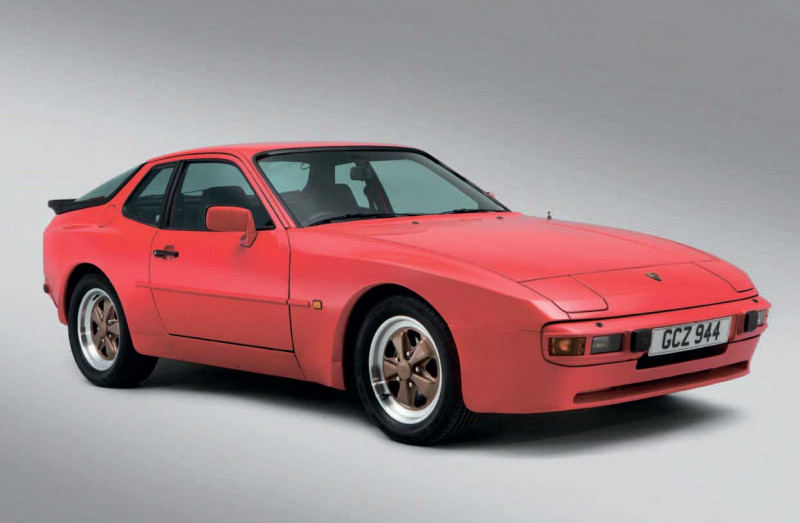
Poor crash repairs abound, but spotting them isn’t difficult. Panel gaps should be relatively tight and even; if not, the car has been pranged. Focus on the shutlines between the bonnet and front wings, plus those between the pop-up headlights and the nose panel as well as the wings.
The rear panel should have a Porsche factory sticker on the inside; it could have come off, but if it’s there the car probably hasn’t been shunted from behind. Replacement stickers are now available, but for a long time they weren’t.
A strong smell of petrol from the load bay on a pre-1986 car means the fuel filler pipe seal has given way; new ones cost £20 or you could pay a professional around £300 to replace it for you. Access is poor so it’s a tricky repair, hence the relatively high cost.
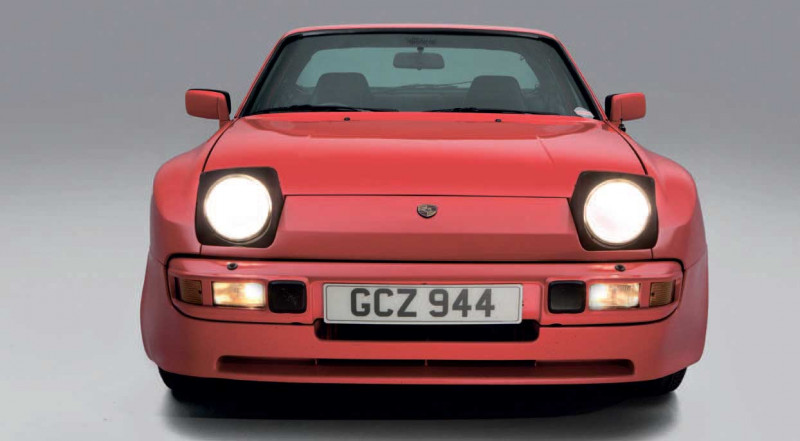
Until 1986 a 62-litre steel petrol tank was fitted; it then switched to an 80-litre plastic item and the two are not interchangeable. The earlier tanks can corrode and replacements are unavailable, so you’re into the realms of paying around £300 for a refurb; there are plenty of second-hand plastic tanks around, because these don’t give any trouble. Exhaust fumes may also be evident because of perished tailgate or sunroof seals, but replacements cost just £70 or so. The fuel filler pipe also corrodes where it passes over the rear suspension beam, and new ones are unavailable.
Badly aligned doors on post-1986 cars are usually down to worn hinge pins or broken bottom hinges; welding and painting will be required for the latter, which is costly. Most UK cars have a factory-fitted sunroof; electric and manual sunroofs were available and both can be problematic. Pre-1986 cars used a different mechanism from later models, and one of the operating cables tends to break. Individual parts aren’t available, so the options are secondhand parts or a conversion to the later system for around £250 if you can find the necessary used bits. Sunroof gears can strip and while replacements are just £10 apiece, they’re fiddly to fit. Sunroof leaks are common because the drainage holes get blocked and the seals also get damaged, allowing water into the cabin. Check around the sunroof aperture plus the seats and carpets for signs of damp.
Water can cause problems in other areas too. It collects on the rubber spoiler when the two drain holes get blocked, then feeds into the rear quarter panels lading to rusting from the inside out, so make sure these are working correctly. Also, the tail light clusters fill up with water once the seals have failed; the best fix is simply to drill a hole in the bottom of the cluster to let the water drain out and to ventilate the cluster.
Key checks: mechanicals
A 944 engine lasts well if properly maintained. Oil and filter changes are required every 6000 miles on pre-1986 cars and Turbos, and every 12,000 miles on all other 944s. Also check if the cambelt has been replaced within the last 48,000 miles or four years. A broken belt means a wrecked engine, and any 16-valve powerplant will be beyond repair; an automatic tensioner was fitted from 1986. Camshaft and balancer shaft belts are relatively cheap, but throw in idlers and tensioners too and the cost becomes around £200 for an 8-valve engine, or £450 for one with 16 valves. It’s worth changing the water pump every other belt change; they’re £200 or so. Replacement of all these bits is an involved task and some special tools make the job a lot easier; a specialist charges around £900 to do everything. A vibration at idle is probably a failed engine mounting; see if the engine is sitting low on one side. It’s usually the nearside that fails after it’s been cooked by the exhaust manifold. New mounts cost £75 apiece for standard items (they must be replaced in pairs), or £250-£300 for uprated parts; allow up to four hours for fitting. A vibration at 2800-3200rpm suggests problems with the balancer shafts, because the shaft timing is out or the drive belt has failed. New belts cost £120 each.
Whereas the Turbo and S2 were fitted with a separate oil cooler, all other 944s featured an integrated oil cooler which is a radiator fitted into the water jacket of the cylinder block. Check the seals haven’t gone; if they have, the engine’s oil will be mixed with its coolant as though the head gasket has blown. Cars with a separate oil cooler can suffer from rusty or cracked pipes and high-quality replacements cost around £400 per set of two.
Turbochargers are durable, but check that the boost gauge shows 0.8 bar when the turbo is in action, indicating a healthy system. If the turbocharger is worn (betrayed by blue exhaust smoke under acceleration), replacements cost around £1500 each. DIY replacement is fiddly but time-consuming, because there’s so much dismantling and refitting involved, which is why the experts will charge upwards of £2000 to do the job. More of a weakness on the 944 Turbo is a cracked exhaust manifold; the wastegate can suffer from the same fate. Replacing either is expensive (only used manifolds are available), so make sure the exhaust isn’t blowing when cold. Also check that the exhaust back box isn’t blowing; a decent aftermarket stainless system will improve the performance and sound for £300-£500.
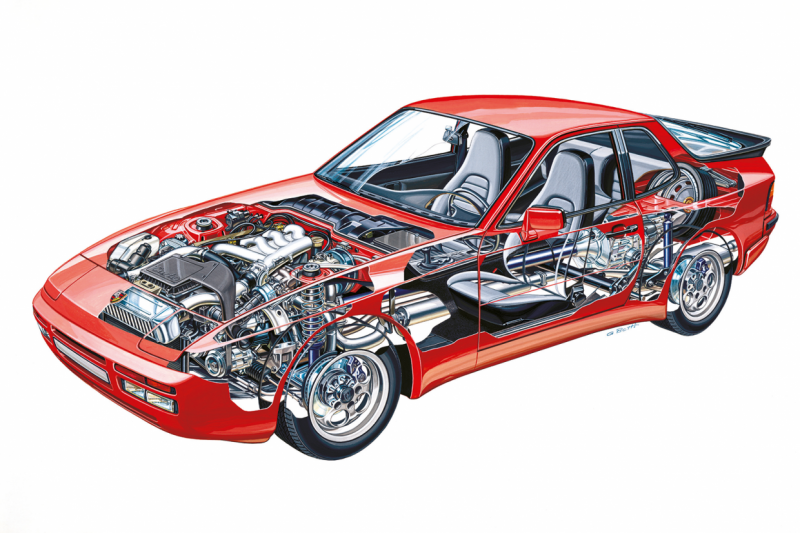
On 944 S2 models there’s a chain that links the two camshafts. If this breaks the engine will be wrecked. It’s essential that the chain and tensioners are replaced at around 90,000 miles or the camshafts will be damaged. All 944 engines have Alusil-lined bores, so reboring isn’t straightforward; it’s generally cheaper to source another engine, although these are in short supply. Find a good one and you’ll pay £3000 for it (with ancillaries); this compares with around £4000 to rebore the original unit before fitting new pistons and liners.
Automatic transmissions, rarely chosen and now not at all sought after, were available on the 944 until 1989, when the S2 replaced the 2.7-litre model. These gearboxes incorporated a flex plate which is effectively a rubber vibration damper, which wears out. Replacement plates cost £900 or a specialist will charge £2000 to fix everything for you.
The five-speed manual gearbox fitted to most 944s is tough, but oil can leak from the differential flange, which leads to the pinion bearing wearing. The transaxle is never quiet, but if it whines excessively, especially as you come on and off the power, budget £2000 for a gearbox rebuild; used transaxles do crop up for about £1000. Incidentally, chatter in neutral is normal; it’s the torque tube echoing the noise.
If the gear change is imprecise, it’s because the linkage in the mechanism has worn. It’s an easy DIY fix and you can buy individual bushes from just £6, or a whole new linkage for £240. A knocking noise from the rear will be a CV joint; replacements are £60 apiece plus an hour for fitting. Wheelbearings are generally robust, but wider wheels will shorten their lives, especially on early cars. Be very wary of noticeable wear in the drivetrain. If the rubber coupling on the clutch centre plate has worn you’re looking at £1000 to fit a new clutch, which entails gearbox removal. A clutch should last 70k-100k miles; if it has been replaced recently, ask if the rear main oil seal was done at the same time. These wear, and oil then leaks from the flywheel housing.
Check under the dash and on the bulkhead under the master cylinder for leaks from the clutch hydraulics. Clutch slave cylinders can also leak; new ones cost £80, while master cylinders are £120. Manual steering racks on early cars wear after 60-80,000 miles; reconditioned items are £140 exchange.
The fitment of power steering (standard from 1985, optional from 1984) brings with it the likelihood of leaking pumps and racks. Any leaks will be evident as the fluid will collect on the engine’s undertray, then leak through the ventilation holes in the tray. Reconditioned power-assisted racks are available for £270 exchange from Western Power Steering (westernpowersteering.co.uk).
The universal joint in the steering column wears, especially if the engine mounts collapse because this leads to the lower steering universal joint getting cooked. It’s worth checking by looking into the engine bay and getting someone to wiggle the wheel. Any wear will be evident; reconditioned columns are available for £165 exchange (from wooliesworkshop.com).
On most cars the suspension will need a refresh, at £100-£150 per corner. Front wishbone balljoints wear, but while early cars use a VW part which can be replaced for around £30, on post-1985 cars the whole wishbone assembly has to be replaced with refurbished arms which are available for £170 for both sides. Also expect tired front anti-roll bar bushes; rubber replacements are under a tenner, or polyurethane items are £30 apiece.
Until the 1985 facelift the underside of the 944 shared much with the 924, which meant there were pressed-steel front control arms and rear semi trailing arms, but these were later switched to cast alloy items which don’t rust. The two types are interchangeable and it’s worth fitting the later type because they don’t flex as much, or corrode.
A popular modification for 944 owners is the substitution of the standard 15 or 16-inch wheels for the later 17-inch items from any post-1993 Porsche. This is only trouble-free on post-1987 cars because of the changes to wheel offsets. Some owners fit spacers with Porsche wheels or aftermarket rims incorporating a spacer. Earlier cars can have other Porsche wheels fitted, but spacers may be necessary, which can reduce wheelbearing life. On pre-facelift cars the rear wheelbearings are already a weak spot; a set of new bearings costs £45 per side.
Floating brake calipers seize if the guide pins are not greased every 12 months. Rear calipers are especially prone, as are earlier models, so check to see if the disc is rusty. On S2s and Turbos (with the four-pot caliper) check for corrosion under the caliper plates by removing the wheels. The handbrake uses drums within the rear hubs; the system isn’t very efficient and the cables can seize. With the car on ramps pull on them and see if they return. If they don’t they’re due for some attention; £200 will see the problem fixed by a specialist.
Key checks: trim and electrics
944s fall into two groups interior-wise: pre- and post-1986, which was when the fascia was changed from the 924’s ‘porthole’ dash to an oval item. Both versions have reliable instrumentation, but some bits are hard to source. Earlier cars have 924 switchgear, which was borrowed from the Golf Mk1. On earlier models the speedometer was cable driven; Porsche switched to a more reliable electronic set-up for facelifted cars.
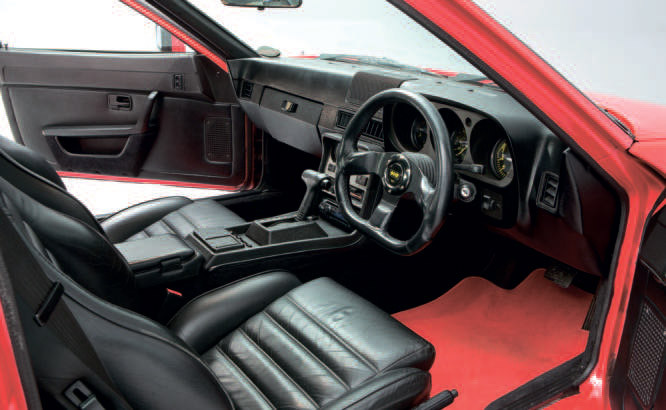
Some seat trim materials are unobtainable and those that are available are expensive. On cars with a sunroof check the condition of the roof lining. This tends to shrink as it dries out over time, leading to tearing. Load bay covers break and cost at least £150 for a decent used item.
The sunroof catches can snap, but used replacements are less than £50 per set; new ones cost five times as much. Where the rear quarter trim meets the headlining there’s a section of fabric-covered cardboard trim. The glue goes off and the vinyl comes away, but it’s easy enough to remake the part on a DIY basis.
The roof mechanism of the cabriolet is reliable but the fabric can get damaged. A high-quality replacement roof costs £600 (£1000 including fitting); the 944’s soft top is the same as the 968’s.
There are motors for the electric mirrors, windows, wipers, rear hatch release and sunroof. All are reliable but can give trouble if they’re not used regularly; most parts are available but it’s expensive, although everything can be bought on a used basis. The tailgate release of pre-1988 cars can fail if it hasn’t been lubricated; later cars have a microswitch instead. The tailgate gas struts also lose their pressure over time, but new ones are available for just £15.
All 944s have fog lights in the bumper, but Turbos and later cars incorporate side, driving and fog lights in one unit. If a stone pierces the glass you’ll have to replace the whole unit, at £500 a side for genuine Porsche items; the lens on its own costs £300. The in-dash digital clock fails, but repair kits cost just £45.
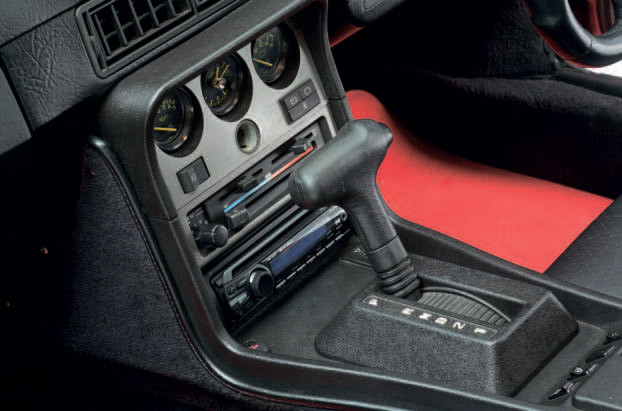
Pre-facelift 944s had a Hirschmann aerial in the wing, but on later cars the antenna is incorporated into the windscreen. The connections fail on later cars, and the only solution is to fit an aerial in one of the wings, as new windscreens aren’t available. They are for earlier models though, at £600. The wipers were originally produced for left-hand drive. On post-1986 cars the conversion for the wiper drive arms wasn’t that well engineered, so make sure everything is intact by looking at the base of the windscreen on the off-side. Lubricating the linkage is a good idea when servicing the car; replacement ball joints are available for just a tenner, while the linkage arms (complete with bushes) are just £65-£90.
On earlier 944s the fuseboard was carried over from the 924. On these cars it sits underneath the battery on the nearside of the scuttle; the result is a rotten fuseboard because of battery leaks and water sitting in the scuttle. Replacement fuseboxes aren’t available for these earlier 944s; later ones are, for an eye-watering £1700. On later 944s the battery was moved to the boot and the wiring was improved, so it’s now less likely to give problems than with earlier models.
Restoring
Unless you have specialist knowledge and equipment you’re better off giving any crashed 944 a wide berth, unless the damage is light. New parts availability isn’t as good as you might be led to believe, although most bits are available on a used basis, whether that’s panels, trim, or mechanical parts.
While steel panels are scarce and costly when they do crop up (Design 911 lists OE front wings at £2229 apiece for example), Club Autosport sells a range of glassfibre panels which you can also have made in carbonfibre or kevlar. They’ll sell you doors at £300 apiece, a complete roof skin is £360 while a bonnet is £330 (carbonfibre costs more).
Sid Malik comments: “The 944’s construction is conventional and the mechanicals shouldn’t faze a competent DIYer, but there’s one thing that you should leave to the professionals and that’s the fitment of new cambelts. You need a special tool for tensioning the belts, so it’s worth paying to have this job done. While any job is in theory possible at home, many jobs are made a lot harder if you don’t have access to a decent ramp or lift.”
A good source of how-to guides is only944.com/repairguides.
Improving
There are plenty of options when it comes to suspension and brake upgrades. Before you go down this route though, if you’re buying your 944 for regular road use, just check that what’s fitted is in good condition; you shouldn’t need any more.
If you do want more stopping power, a £700 Wilwood four-pot alloy caliper front brake kit should be just the job; a decent set of pads will add another £80 to the bill. You could convert to a Turbo set-up but that would require replacement of the hubs and stub axles too; by the time you’ve done everything you’ll have saved nothing, even using second-hand parts.
Fitting new springs and dampers to the suspension is likely to transform the ride and handling; coilovers are another option but you don’t need to spend that much. You’ve got plenty of options here; Sid Malik recommends Koni dampers which are adjustable. At the front they’re top adjustable but the rear ones have to be removed to adjust them. Other brands worth fitting include Bilstein and KW. A set of Powerflex bushes is another worthwhile fitment, if you’re rebushing the suspension anyway. On the 944 Turbo it’s worth fitting a poppet (or cycling) valve to delay the opening of the wastegate to build up boost; in standard form the wastegate tends to open early. It’s easy to plumb in one of these valves, which cost about £200.
The best 944 for you
The most sought after models are the Turbos. While the added complexity of these fastest 944s of all means the spectre of greater unreliability and higher running costs, in reality, if you’re covering a limited annual mileage and you maintain the car properly, you’re not really exposing yourself to any great financial risk. Also, the Turbos are often the most mollycoddled of all 944s. If you can’t stretch to a Turbo, one of the regular editions should fit the bill very nicely if you can live with a lower level of performance. Just bear in mind that engine parts for the 944 S are especially expensive, and a lack of torque makes them less pleasant to drive, so unless the car is priced to sell you’re better off giving these variants a wide berth.
There’s no shortage of cabin space and practicality is superb with any 944, but post-1985 cars have more space and better ventilation, whereas earlier models are lighter and feel more agile. No 944 is short on performance, while communicative steering, a superb driving position and strong brakes make the 944 a true driver’s car, with the S2 regarded by many as the pick of the bunch. Whatever you’re considering buying, if the car you’re looking at doesn’t have recent service history from a known specialist then you’re probably better off walking away. There are plenty of 944s that have this, and without it there’s a good chance of big bills materialising very quickly.
The 944 market
Until the arrival of the Boxster, the 944 was Porsche’s biggest-selling model with more than 163,000 examples built. The UK was a popular market and there are still lots of cars available, so there’s something for everyone. For most buyers originality is key; any upgrades should be of the sympathetic kind.
Expect to spend at least £5000 to buy an early 944 Lux that’s usable but it might need a bit of tidying. The 2.7-litre cars start at £7000 or so for something good, with high-mileage S2s starting at £8000 or thereabouts.
There was no 944 Lux cabriolet; only open-topped versions of the S2 and Turbo were offered. These are among the most sought after of the various 944s which is why values of drop-tops are high. You might find the odd cabrio for less than £16,000, but consider this the start point for something that won’t be a liability. This is also where Turbos begin, but it’s easy to spend £25,000 on a truly excellent S2, cabriolet or Turbo. The best examples of these models fetch £30,000, although dealers will ask for up to £35,000 for an exceptional car.
bought one
Colin Harvey owns the 1984 944 Lux pictured here. He comments: “I work in the motor trade and a few years ago I bought a 924 S on a whim. I loved driving it but I much preferred the looks of the 944, so I bought this example off eBay, unseen. It proved to be a great buy, and while a lot of people turn their noses up at the automatic gearbox, I use the Porsche more as a cruiser, a role that it fulfils superbly.
“The car is family-friendly – I have two young children – and it handles brilliantly, so driving it is really enjoyable, thanks to the low-set seating position and ample power. The 944 is also cheap to run thanks to the ready availability of any consumables – which is all that the car has needed with me so far. As an affordable and usable classic, the 944 has plenty to offer.”
944 evolution
- 1981 The 944 Lux coupé debuts at the Frankfurt motor show. These early cars have the same dashboard as the 924, and when the 944 goes on sale in the UK in 1982, they would all feature a 163bhp 2479cc four-cylinder engine.
- 1985 A revised 944 arrives with a bigger fuel tank, a redesigned dash, better ventilation and 40 other modifications. These cars are known as 85/2 models because they were launched in February
- 1985 The 220bhp 944 Turbo also arrives, with a revised nose and carrying the internal designation 951 (LHD) and 952 (RHD).
- 1986 The 944 S arrives with a 190bhp 16-valve 2479cc engine; it sells alongside the 944 Lux and Turbo.
- 1987 The Turbo gets ABS as standard and the Turbo SE appears, with 250bhp. Just 70 RHD examples are built.
- 1988 The Turbo is now offered with a Club Sport chassis, with adjustable suspension.
- 1989 The 944 S2 debuts, with a 2990cc 211bhp 16-valve engine. The 944 Lux is axed within months.
- 1989 A 2.7-litre engine is now fitted and the S2 cabriolet arrives.
- 1990 The Turbo Cabriolet reaches showrooms.
- 1991 The 968 supersedes the 944.
Key specialists
- Porsche Torque, Middlesex 01895 814 446 porsche-torque.co.uk
- Augment Automotive, Glos. 01452 831 710 augmentautomotive.co.uk
- Braunton Engineering, Devon 01271 814 144 brauntonengineering.co.uk
- Cavendish, Nottinghamshire 0115 972 2001 cavendishporscha.com
- Club Autosport, West Midlands 01384 410 879 clubautosport.co.uk
- Design 911, London 0208 500 8811 design911.co.uk
- Eporsch, Surrey 01483 808 230 eporsch.co.uk
- Frazer Part, Merseyside 0151 665 0911 frazerpart.com
- Hartech, Lancashire 01204 302 809 hartech.org
- JMG Porsche, Dorset 01202 488800 jmgarage.com
- Northway Porsche, Berks. 01189 714 333 northway.co.uk
- Performance Porsche Klassiker, Yorks. 01484 721 559 performance-porsche.co.uk
- Porsche Spares UK, Warks. 01676 532 346 wooliesworkshop.com
- Precision, Sussex 01825 721 205 precisionporsche.co.uk
- Promax, Milton Keynes 01296 714 856 promaxmotorsport.com
- Revolution, Yorkshire 0113 468 6020 revolution-porsche.co.uk
- RPM Specialist Cars, North Yorkshire 01423 865 602 rpmspecialistcars.co.uk
- RPM Technik, Hertfordshire 01296 663 824 rpmtechnik.co.uk
- Wrightune, Oxfordshire 01491 826 911 wrightune.co.uk
Real cars for sale
£6995: 1984 944 Lux
124,400 miles, new front pads and discs, clutch master cylinder, boot and sunroof seals, and more. Would benefit from a respray.
£9995: 1990 944 S2 cabriolet
117,000 miles with FSH using Porsche dealers and independent specialists. New tyres. Stored for the last two years.
£22,950: 1988 944 Turbo
137,000 miles. Recently restored including full respray; lots of history and receipts. Sports seats, M030 sport suspension.
Join the club
Porsche 944 Owners’ Club facebook.com/944ownersclub The Independent Porsche Enthusiasts’ Club tipec.net Porsche Club Great Britain porscheclubgb.com
Our expert
Sid Malik runs Uxbridge-based Porsche Torque (porsche-torque.co.uk), which specialises in Porsches both classic and modern. The company does anything mechanical and it sells the occasional car but it doesn’t get involved in restorations or bodywork. Sid comments: “I’ve worked on Porsches since the late 1980s, although Porsche Torque wasn’t set up until 2011. I did my apprenticeship on 944s and I ran 944s on a daily basis from 1998 until very recently. My first Porsche was a 1986 944 Turbo. After that, I owned a Turbo cabriolet, and an S2 cabriolet, among others. I’ve got a real soft spot for 944s because they’re such great cars, yet they’re affordable to buy and run.”
Thanks to Sid Malik of Porsche Torque and Colin Harvey, owner of the car pictured.
“Over the past few years we’ve seen values of 944’s steadily increasing as enthusiasts discover what a fantastic classic car choice the 944 is. There’s a great club community surrounding the car, and the 944 Owners Facebook Group is a really useful resource for help and advice. We would suggest you buy the best car that you can afford as this will save you money in the long run; there’s no such thing as a ‘cheap’ 944. We’d also suggest you consider an agreed value policy so that the true value of the Porsche would be realised should the worst happen.” Andrew Evanson senior operations manager at Lancaster Insurance

